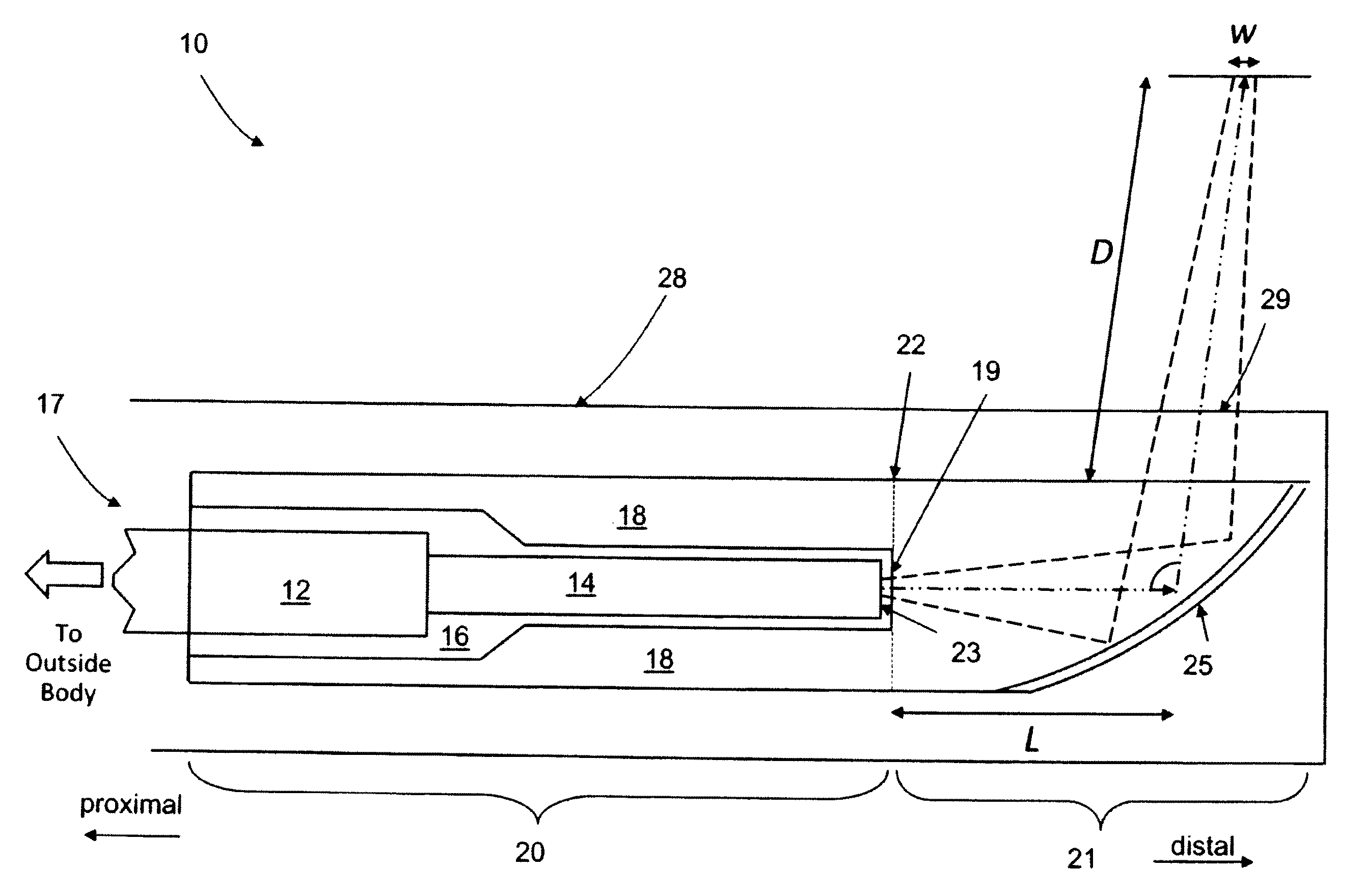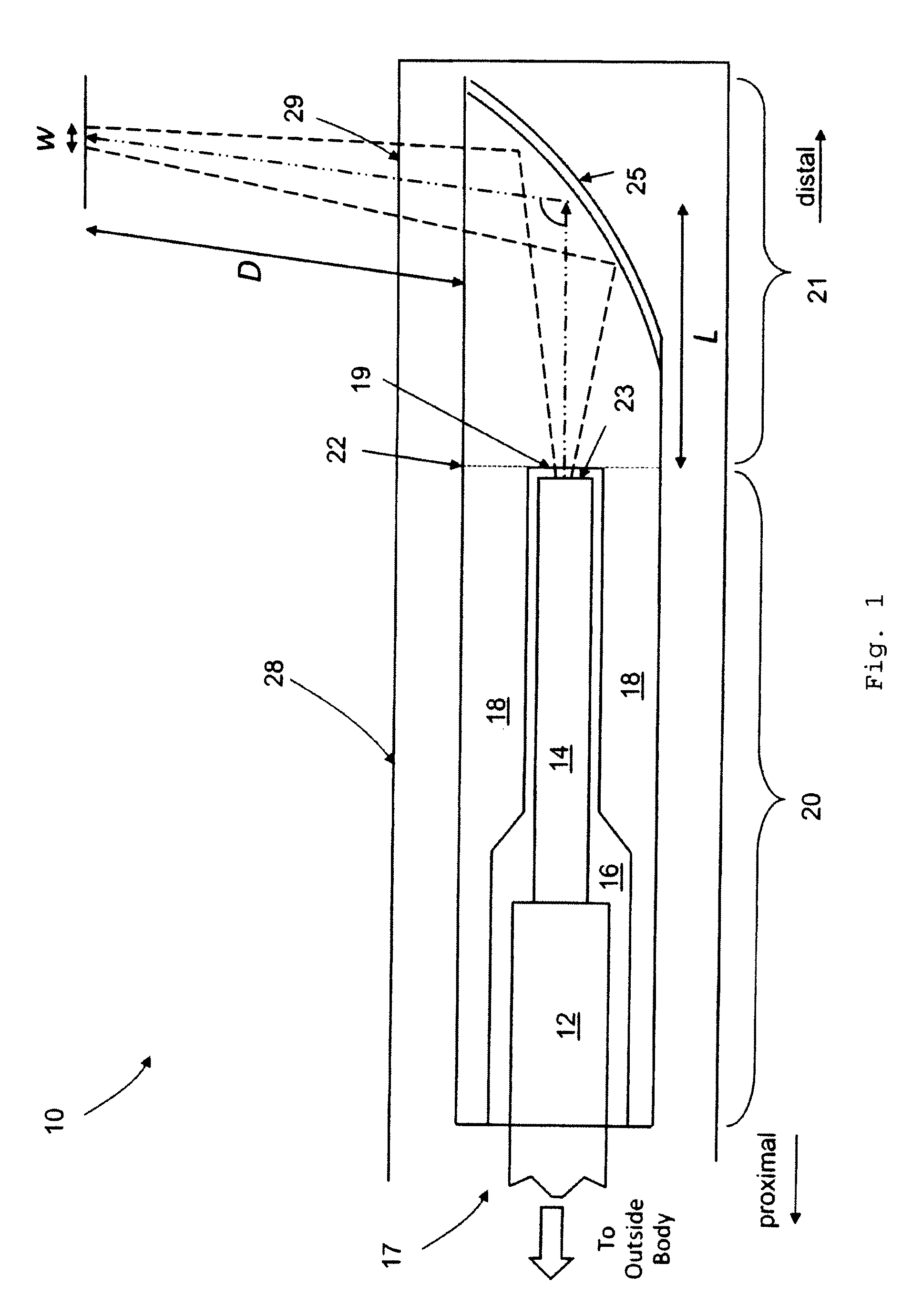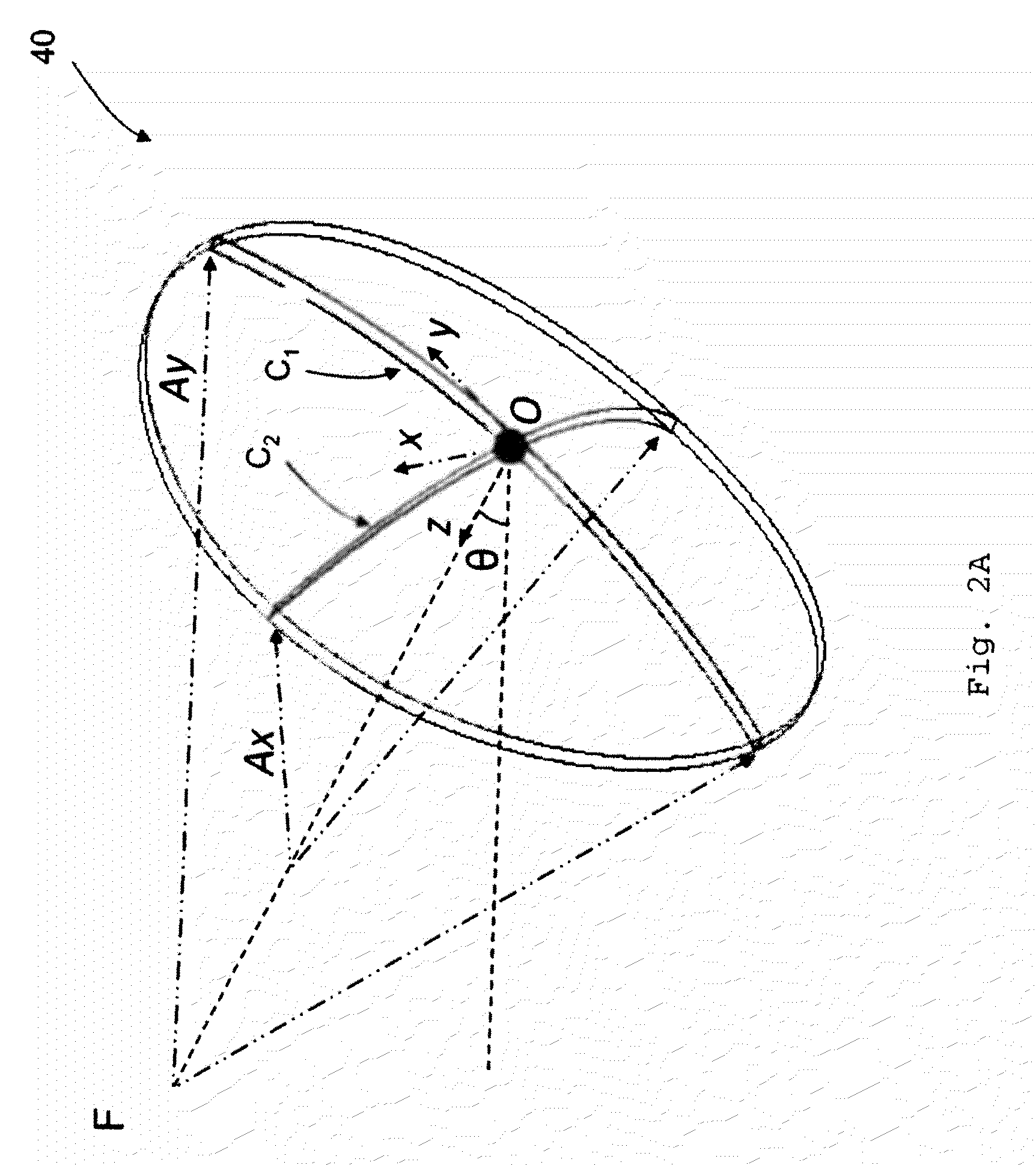Miniature Optical Elements for Fiber-Optic Beam Shaping
a technology of fiber-optic beam shaping and miniature optical elements, applied in the direction of instruments, catheters, angiography, etc., can solve the problems of low-cost manufacturing of miniature optical devices, excessive manufacturing costs, and excessive size, so as to improve manufacturing repeatability and prevent disruption or damage to sensitive samples
- Summary
- Abstract
- Description
- Claims
- Application Information
AI Technical Summary
Benefits of technology
Problems solved by technology
Method used
Image
Examples
embodiment 85
[0105]This cap embodiment 85 provides several benefits in addition to those described above for the cap design shown in FIG. 3. First, the lensed surface 83 is located within a cavity, protecting it from accidental damage during handling or operation. Second, the area of the internal lensed surface 83 is smaller than that of the distal end face 25′, which simplifies the tool design used to fabricate the cap. Third, because the distal end face 25′ is flat instead of curved, achieving a uniform coating layer thickness is simplified. Coating adhesion may also be improved because of the flatness of the end face.
Dual Lensed Surfaces
embodiment 95
[0106]FIG. 6 shows another optical subsystem 90 with a cap embodiment 95, where beam focusing is provided by a combination of one internal lensed surface 96 at the end of the cavity and a reflective lensed surface 97 formed on the distal end face. Beam direction is still provided by making the end face 97 reflective by coating with a reflective material such as metal or a dielectric coating. In this embodiment, light radiating from the fiber tip 23′ expands into a gap G. The light refracts upon interaction with the internal lensed surface 96 and propagates through a length L′ of solid material. The light then impinges on the distal end face 97, where it is further focused and redirected out a side face of the cap. The gap length G, the solid material length L′, and the surface sags of the internal surface 96 and distal end face 97 can be optimized in a manner analogous to the one described above using an error function. If the cap 95 is to be placed inside of a sheath, it is underst...
embodiment 100
[0108]FIG. 7 shows another system embodiment 100 of the present invention that uses a cap 105, where light radiating from the tip 23 of the fiber is split into two focused beams B1, B2 by a partially-reflecting coating on the distal end face 107 of the miniature optical cap 105. In this embodiment, light radiating from the fiber tip 23 expands into a length L of solid material. The light impinges on the distal end face 107, where it interacts with a partially reflecting coating that transmits a portion of the light through the end face and reflects another portion of the light through the side face of the cap. The reflected portion of the light B1 reaches a focal plane at a first working distance D with a focal spot size w. The transmitted portion of the light B2 reaches a second focal plane at a second working distance D″ with a second focal spot size w″. If the cap is to be placed inside of a sheath, it is understood that the solid length L and the distal end face surface sag can ...
PUM
 Login to View More
Login to View More Abstract
Description
Claims
Application Information
 Login to View More
Login to View More - R&D
- Intellectual Property
- Life Sciences
- Materials
- Tech Scout
- Unparalleled Data Quality
- Higher Quality Content
- 60% Fewer Hallucinations
Browse by: Latest US Patents, China's latest patents, Technical Efficacy Thesaurus, Application Domain, Technology Topic, Popular Technical Reports.
© 2025 PatSnap. All rights reserved.Legal|Privacy policy|Modern Slavery Act Transparency Statement|Sitemap|About US| Contact US: help@patsnap.com



